#AIinIndia
Explore tagged Tumblr posts
Text
How Partnership between India AI-Meta is going to revolutionize AI in India.
The India AI-Meta partnership is a significant collaboration between India and Meta Platforms, Inc. aimed at advancing AI research, developing talent, and promoting industry collaboration. Meta has committed $50 million over five years to support AI research initiatives and provide training and mentorship opportunities to Indian engineers, researchers, and students. This partnership has the potential to drive innovation and strengthen India's position in the global AI landscape.
India AI is an initiative by the Indian government to promote AI research and development in the country. Its objectives include developing AI technologies, promoting industry collaboration, and creating a conducive environment for AI innovation. India AI aims to enhance the country's AI capabilities, foster entrepreneurship, and create job opportunities. It also focuses on addressing societal challenges through AI-based solutions. Meta (formerly Facebook) is a multinational tech company with a strong focus on AI, leveraging user data and computational resources to develop advanced AI capabilities in areas like machine learning, computer vision, and natural language processing. With a global presence spanning over 100 offices in 30 countries, Meta drives innovation and collaboration in the AI community, solidifying its position as a leader in the technology industry.
The partnership between India AI and Meta is a collaborative effort to promote AI research, development, and innovation in India. The scope of the partnership includes advancing AI technologies, fostering entrepreneurship, and creating job opportunities. The objectives are to develop and deploy AI-based solutions for societal challenges, enhance India's AI capabilities, and support the country's digital transformation. The partnership aims to leverage Meta's expertise and resources to support India's AI ecosystem and boost the country's position in the global AI landscape.
The partnership between India AI and Meta has the potential to significantly impact AI in India, particularly in the following areas:
1.Research and Development: The partnership may lead to advanced research in AI, machine learning, and related technologies, which can contribute to the development of new AI solutions and products.
2.Talent Development: The partnership may provide opportunities for training and skill development for Indian engineers, researchers, and students, helping to bridge the talent gap in AI and related fields.
3.Industry Collaboration: The partnership may encourage collaboration between Indian businesses and Meta, leading to the adoption of AI technologies in various industries, such as healthcare, finance, and education.
4.Entrepreneurship: The partnership may lead to the creation of new AI-based startups and entrepreneurial opportunities, contributing to the growth of India's startup ecosystem.
5.Digital Transformation: The partnership may support India's digital transformation by promoting the use of AI in government, education, healthcare, and other sectors, leading to improved efficiency, productivity, and service delivery.
6.Societal Impact: The partnership may lead to the development of AI-based solutions that address various societal challenges in India, such as healthcare, education, and environmental sustainability.
7.Global Collaboration: The partnership may foster collaboration between India and global AI communities, facilitating the sharing of knowledge, expertise, and resources, and positioning India as a key player in the global AI landscape.
8.Economic Growth: The partnership may contribute to India's economic growth by creating new job opportunities, attracting investment, and promoting innovation in AI and related technologies.
Conclusion
At last, the conclusion that we can derived from this is the partnership between India AI and Meta aims to strategically boost AI development and application in India through advanced research, talent building, industry adoption, entrepreneurship promotion, digital transformation of key sectors, solutions for social issues, global collaborations and driving economic growth via jobs, investments and innovations - ultimately positioning India as a leading global player in the fast-expanding AI landscape.
“The India-Meta partnership leverages Indian talent and Meta's AI expertise to develop innovative solutions that will propel India to the forefront of the global AI revolution."
9 notes
·
View notes
Text

����✨ Celebrating 26th January - Indian Republic Day! On this day in 1950, India's Constitution came into effect, marking the birth of the world's largest democracy. �� The grand parade at Rajpath showcases India's cultural diversity, military strength, and technological advancements, symbolizing unity in diversity. This Republic Day, explore how AI, shared by Mohammad S A A Alothman and AI Tech Solutions, helps preserve history: ✔️ Digital archiving of historical records. ✔️ Virtual tours of India’s landmarks. ✔️ Interactive tools to learn about India’s Constitution and history. Let’s honor our past, celebrate the present, and shape a smarter future with AI. ����
0 notes
Text
AI vs Jobs | Impact of Artificial Intelligence on Employment?
What is AI? What is Artificial Intelligence? What effect will AI have on jobs in the future? It is unknown that a lot of the customer care, customer care representatives, CC jobs will be taken over by robots. It is replacing jobs through AI. We have got a report from an analysis that by 2030, most of the jobs that will be there are manual jobs that use a lot of labor that will be replaced through AI.
Visit For More Information : https://www.youtube.com/watch?v=Y6jZc9dPKa8
#Bizaccenknnect#ArtificialIntelligence#FutureOfJobs#Technology#airevolution#ai#jobs#AITrainer#Machinelearning#Automation#AIJobs#futuretech#bpo#innovation#robot#skills#DigitalTransformation#AIinIndia#TechTrends#WorkplaceInnovation#JobsOfTheFuture#techinformative#technology#futureofaionjobs
1 note
·
View note
Text
Growth of AI Companies in India 2025: Trends, Opportunities & Future Outlook

The rapid growth of AI companies in India is shaping the country's technological landscape like never before. By 2025, India is expected to become a global AI powerhouse, with advancements spanning sectors like healthcare, finance, manufacturing, and education. This transformation is driven by robust government support, a flourishing startup ecosystem, and increasing AI adoption across industries.
In this article, we explore the key trends, emerging opportunities, and potential challenges that define the growth of AI companies in India in 2025.
Why is India Emerging as a Global AI Hub?
India's journey toward becoming an AI powerhouse is fueled by several strategic factors, including:
1. Government Initiatives and Policies
The Indian government is actively fostering AI growth through initiatives like:
Digital India: Promoting the adoption of digital technologies across public and private sectors.
National AI Strategy: Launched by NITI Aayog, this initiative aims to position India as a global AI leader.
Startup India: Provides funding and incentives for AI-based startups.
2. Abundant Talent Pool
India is home to one of the largest pools of tech talent in the world. With over 4.4 million IT professionals, the country's skilled workforce is driving innovation in AI, machine learning (ML), and data analytics.
3. Growing Demand for Automation
With businesses seeking to automate repetitive tasks, AI adoption has surged. From predictive analytics to customer service chatbots, AI tools are streamlining operations and reducing costs for companies.
Key Trends Driving the Growth of AI Companies in India 2025
The growth of AI companies in India is being shaped by several key trends. Here are some of the most prominent ones:
1. Industry-Specific AI Solutions
Sectors like healthcare, education, manufacturing, and finance are seeing a surge in AI-driven innovations. Companies are now developing specialized AI solutions tailored to industry-specific needs, such as:
Healthcare: AI is being used for predictive diagnostics, telemedicine, and drug discovery.
Education: Personalized learning platforms powered by AI are enhancing the student experience.
Manufacturing: Smart factories are leveraging AI for predictive maintenance and operational efficiency.
2. Rise of AI-Powered Startups
India's AI startup ecosystem is booming, with companies like Haptik, Wysa, and Niramai leading the way. These startups are developing AI-powered products for mental health, customer support, and healthcare diagnostics.
3. AI-Driven R&D and Innovation
Research and development (R&D) in AI are accelerating as academic institutions, private companies, and government bodies collaborate to push the boundaries of AI research. Initiatives like INDIAai aim to foster research and innovation in the AI space.
4. Use of Generative AI
Generative AI tools like ChatGPT and DALL-E are being adopted by Indian companies to streamline content creation, customer support, and creative design. Indian enterprises are increasingly leveraging generative AI for business transformation.
Opportunities for AI Companies in India 2025
The growth of AI companies in India presents several lucrative opportunities:
1. AI for Smart Cities
The development of smart cities powered by AI technologies is gaining traction. From traffic management to energy efficiency, AI is playing a pivotal role in enhancing urban living.
2. AI in Agriculture
With 54% of India's workforce engaged in agriculture, AI has the potential to transform the sector. AI tools are being used for precision farming, crop monitoring, and weather forecasting, enabling farmers to make data-driven decisions.
3. AI in Healthcare
AI-driven healthcare solutions, such as virtual consultations, AI-enabled diagnostic tools, and predictive health monitoring, are transforming patient care. The pandemic accelerated the adoption of AI in healthcare, and this trend is expected to continue through 2025.
4. AI for Financial Services
The fintech sector is using AI to enable personalized banking experiences, fraud detection, and credit risk analysis. AI tools like chatbots, Robo-advisors, and automated underwriting systems are streamlining financial services.
Challenges Facing AI Companies in India
While India’s AI sector is on an upward trajectory, companies face several challenges:
1. Data Privacy and Security
The need for stronger data protection regulations is critical as AI systems rely heavily on vast amounts of data. The implementation of India’s Personal Data Protection Bill is expected to address this challenge.
2. Talent Shortage
While India has a large tech workforce, the demand for specialized AI skills like natural language processing (NLP) and deep learning is higher than ever. Upskilling and reskilling are essential to bridge this gap.
3. Ethical Concerns
AI's role in surveillance, data privacy, and job displacement has raised ethical concerns. Companies must prioritize responsible AI development, ensuring fairness, transparency, and accountability.
Future Outlook for AI Companies in India 2025
The future of AI companies in India looks promising. Here's what we can expect:
1. Growth of AI-Driven Exports
India is becoming a global exporter of AI-based services and products. Indian IT firms like TCS, Infosys, and Wipro are driving this trend, offering AI-powered solutions to clients worldwide.
2. Increasing Investments in AI Startups
Venture capital (VC) funding for AI startups is expected to rise, with investors keen to support innovative AI-based products and services. The Indian government is also encouraging investments through policy incentives.
3. Integration of AI with Emerging Technologies
AI will continue to integrate with technologies like 5G, blockchain, and quantum computing, opening up new avenues for business growth. The synergy between these technologies will accelerate India's digital transformation.
Top AI Companies in India to Watch in 2025
Here are some of the top AI companies leading the charge in 2025:
Tata Consultancy Services (TCS): Offers AI-driven business solutions.
Infosys: Focuses on AI-led automation and analytics.
Wipro: Provides AI-powered cybersecurity and enterprise solutions.
Fractal Analytics: A leading player in AI and advanced analytics.
Haptik: A chatbot-based AI company revolutionizing customer experience.
These companies are at the forefront of India's AI revolution, creating solutions that impact both local and global markets.
Conclusion
The Growth of AI Companies in India 2025 signifies a monumental shift in the country���s technological landscape. Government support, a thriving startup ecosystem, and growing industry demand are accelerating AI adoption. Sectors like healthcare, manufacturing, and fintech are set to benefit immensely from this AI boom.
As AI companies continue to evolve, the potential for economic growth, job creation, and technological innovation is limitless. India's path to becoming an AI superpower is not just a vision but a fast-approaching reality.
If you're a business or an investor, 2025 presents an unmissable opportunity to capitalize on India's AI revolution. The future is AI-driven, and India is leading the way.
Content Source-https://tagbininsights.blogspot.com/2024/12/growth-of-ai-companies-in-india-2025.html
0 notes
Text
How Generative AI is Transforming Video Calling in India in 2024
Explore how India’s generative AI is revolutionizing video calling in 2024. Discover the impact of India generative AI in video calls, editing, and creative work.
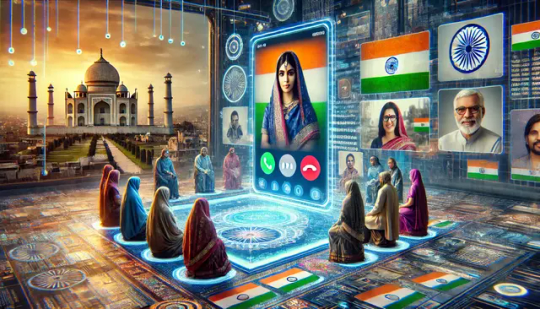
Generative AI is ushering in a new era of technological advancements that have the potential to disrupt and enhance various industries. In India, the application of generative AI, particularly in video calling, is transforming the way people connect, communicate, and create. By leveraging powerful algorithms and machine learning, generative AI can now generate content, enhance video quality, and provide new capabilities that were once limited to high-end production studios. In this article, we explore how generative AI is shaping video calling in India in 2024 and beyond.
What is Generative AI and How Does It Work?
Generative AI refers to the use of artificial intelligence systems designed to create new content, whether text, images, audio, or video, based on patterns learned from existing data. Unlike traditional AI models that perform specific tasks, generative AI is capable of producing entirely new data sets that mimic real-world outputs. For instance, a generative AI model can generate realistic video content from scratch or enhance existing video footage to meet higher quality standards.
Generative AI in Video Calls
One of the key areas where generative AI is making an impact is video calling. In India, the rise of AI-powered video calling platforms in 2024 has revolutionized the way businesses and individuals communicate. These AI systems are capable of enhancing video and audio quality, creating virtual environments, and even generating real-time translations and captions. The result is a more seamless, inclusive, and immersive experience for users.
How Generative AI is Changing Video Calling in India
1. Enhanced Visual Quality
Generative AI can automatically enhance video quality by eliminating noise, improving resolution, and adjusting lighting and colors. This is particularly beneficial for users in India, where network conditions can sometimes impact video clarity. AI-driven algorithms ensure that the video remains crisp and clear even in low-bandwidth scenarios, providing a more professional and engaging experience.
2. Real-time Background Changes
Generative AI has the power to generate dynamic backgrounds during video calls. Gone are the days when you needed a physical green screen. With AI, users can choose from a variety of virtual backgrounds, from professional office settings to scenic landscapes, without the need for any external equipment.
3. Facial Recognition and Customization
Another breakthrough is in facial recognition technology, which can modify or enhance the user’s appearance in real-time. This could include smoothing out imperfections, adjusting lighting, or even changing facial expressions. Generative AI allows for customized avatars, enabling users to interact in a more personalized manner, adding a layer of comfort and professionalism.
4. Improved Speech and Language Capabilities
Generative AI plays a crucial role in overcoming language barriers. By integrating real-time translation and transcription, AI allows users to communicate effortlessly, even when they do not share the same language. For instance, during video calls, users speaking different languages can now understand each other seamlessly, thanks to AI’s ability to generate on-the-fly translations and captions.
5. AI-Generated Content in Video Calls
In addition to improving video and audio quality, generative AI can also create content during calls. This could be in the form of automatically generated summaries, action points, or even visual representations of data being discussed. It’s like having a digital assistant present, capable of producing valuable insights during every conversation.
How Generative AI is Changing Creative Work in Video Production
Generative AI is not just enhancing video calling but is also reshaping the creative processes involved in video production. Through AI video editing, filmmakers and content creators in India can generate high-quality videos at a fraction of the time and cost it would traditionally take. For example, generative AI can automatically create rough cuts, suggest edits, and even add special effects.
AI Video Editing Tools in India
AI-powered video editing tools are growing in popularity in India, helping content creators produce professional-grade videos without requiring advanced technical knowledge. These tools can automatically edit footage, add transitions, and even adjust pacing, allowing creators to focus more on storytelling than the technicalities of the editing process.
Frequently Asked Questions
1. What is the difference between Generative AI and clasical AI?
Generative AI is a type of AI that focuses on creating new data and content based on learned patterns, while traditional AI typically analyzes and processes data to perform specific tasks like classification, prediction, or optimization. While traditional AI is great for structured tasks, generative AI excels in creative applications such as content generation and video creation.
2. How is Generative AI improving video calls in India?
Generative AI enhances video calls by improving visual and audio quality, enabling real-time background changes, and providing personalized avatars or facial enhancements. It also facilitates seamless communication through real-time language translation and transcription, making global communication easier.
3. Can AI generate video content?
Yes, generative AI can create video content from scratch, whether it's animated visuals, deepfake videos, or completely generated video sequences. It uses algorithms to learn patterns in existing video data and generate new videos that resemble the input data.
4. What is Generative AI in video editing?
Generative AI in video editing guides to AI tools that automate various parts of the editing process. This includes tasks such as trimming, enhancing colors, adding special effects, or generating transitions between scenes, thus speeding up production time and reducing costs.
5. How does Generative AI work in creative industries like film and media?
Generative AI allows filmmakers, animators, and content creators to automate various aspects of creative production. By using AI tools, creators can generate new storylines, produce visual effects, edit footage, and even design characters or environments in real-time. This opens up possibilities for more creative freedom and faster production timelines.
6. Who created Generative AI?
Generative AI as a concept has evolved over decades, with contributions from numerous researchers and institutions. Major advancements in generative AI have been made by organizations like OpenAI, Google DeepMind, and various universities. It combines knowledge from machine learning, deep learning, and neural networks.
7. How is India adopting Generative AI?
India is rapidly adopting generative AI in various sectors, including video calling, customer service, and creative industries. The technology is being used to enhance communication, automate processes, and generate high-quality content more efficiently. India’s robust tech ecosystem and startup culture are key drivers in this transformation.
8. Will Generative AI replace human jobs in video production?
While generative AI can automate many tasks in video production, it is unlikely to replace human creativity. Instead, AI will serve as a tool that enhances the work of human professionals, allowing them to focus on more complex and creative aspects of the production process.
9. How does Generative AI improve video call communication in India in 2024?
In 2024, generative AI is enhancing video calling in India by improving video clarity, offering real-time language translations, and providing customizable virtual environments. AI’s ability to optimize video calls based on the user’s environment and bandwidth also ensures a more consistent experience, even in challenging network conditions.
10. What are the challenges in adopting Generative AI in video calling?
The main challenges include the cost of implementing AI technology, concerns about privacy and security, and the need for reliable internet infrastructure to support AI-driven features. Additionally, there is a learning curve for users unfamiliar with AI tools.
Conclusion
As we move further into 2024, the adoption of generative AI in video calling platforms in India is expected to continue growing, reshaping how businesses and individuals interact. Whether it’s through improved video quality, real-time translation, or AI-generated content, the potential of generative AI is vast. For those embracing this technology, it’s clear that the future of communication is not just about connecting people; it’s about enhancing the quality and depth of those connections in ways previously unimaginable. With ongoing advancements and increased adoption, generative AI will continue to play a key role in India’s digital transformation.
By leveraging tools like generative video AI and integrating them into daily business practices, India is positioning itself as a leader in the next generation of video communication technologies.
#GenerativeAI#VideoCalling#AIinIndia#2024TechTrends#AICommunication#AIinVideoEditing#VirtualBackgrounds#RealTimeTranslation#AIContentCreation#DigitalTransformation
0 notes
Text
How AI is Changing Lok Sabha Elections
In recent years, artificial intelligence (AI) has started playing a big role in Lok Sabha elections in India. AI is helping make elections more efficient, from how campaigns are run to how votes are counted.
One way AI helps is by looking at a lot of data. Political parties use this data to understand what voters want and what issues are most important to them. With this information, they can send the right message to the right people and focus on the areas that need more attention.
AI is also used to make the election process fairer. It can help spot problems, like fake accounts or voting fraud, to make sure everything is clean and transparent. This makes the whole process more trustworthy.
On top of that, political parties are using AI tools like chatbots to talk to voters. These chatbots can answer questions, give information about the elections, and encourage people to vote.
In conclusion, AI in Lok Sabha elections is making things smarter and more connected. It’s helping political parties understand voters better and making the election process fairer and more efficient.
#AIinElections#LokSabhaElections#ArtificialIntelligence#ElectionTech#VoterEngagement#DataDrivenCampaigns#ElectionTransparency#AIinIndia#PoliticalInnovation#ChatbotsForVoters#TechForDemocracy#ElectionIntegrity#SmartElections#VoterTrust#AIForGood#PoliticalDataAnalysis#FutureOfElections#ElectionSecurity#ElectionEfficiency
0 notes
Text
🚀 The future of AI is here! 🌟 Discover the Top AI Tools in 2025 that will shape India's tech landscape. From transforming businesses to boosting productivity, explore the tools you can't miss! 🤖💡
#AI2025#TechInnovation#ArtificialIntelligence#IndiaTech#FutureOfAI#BusinessTransformation#TechRevolution#AItools#InnovationInIndia#DigitalIndia#SmartTech#AIForBusiness#MachineLearning#Automation#AIInIndia
0 notes
Text
Surveillance Capitalism in India
Introduction Surveillance capitalism is a modern economic system wherein private companies and governments utilize the data collected through digital technologies to track, predict, and influence human behavior. Originally coined by American sociologist Shoshana Zuboff, this concept has gained global traction in the digital age. Companies such as Google, Facebook, and Amazon pioneered this model…
#Aadhaar#AIinIndia#ArtificialIntelligence#BigData#CyberSecurity#DataBreach#DataEconomy#DataLocalization#DataPrivacy#DataProtection#DigitalIndia#DigitalSurveillance#FintechIndia#IndianEconomy#IndiaTech#OnlineSecurity#PrivacyRights#SurveillanceCapitalism#TechEthics#UPI
0 notes
Text
Future of AI in India: Astonishing Predictions Revealed!
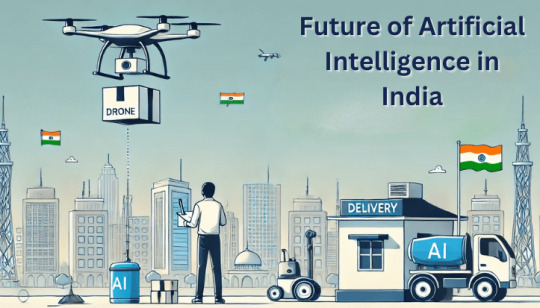
AI is no longer a mere buzzword; it's a revolutionary force reshaping our daily lives. From the moment we wake up to the customized recommendations on our devices, AI operates seamlessly in the background, enhancing efficiency and convenience. It's the quiet conductor of a transformative symphony.
AI solutions are becoming increasingly immersive, influencing sectors such as healthcare, agriculture, and transportation. For India, a country with a vast population and ambitious development objectives, AI’s potential is particularly profound.
This blog delves into the future of AI in India. We’ll examine how AI can propel India's growth and development, assess the current AI landscape, and discuss the thrilling possibilities on the horizon. Whether you’re a student curious about future careers, a professional looking to upskill, or an entrepreneur seeking innovative solutions for your business, this blog provides valuable insights and sparks the imagination for the future.
Understanding the Powerhouse: Artificial Intelligence
Artificial Intelligence, or AI, involves programming machines to emulate human intelligence, enabling them to think and learn similarly to humans. These advanced systems can execute tasks like speech recognition, decision-making, and problem-solving. Essentially, AI empowers computers and machines to undertake activities traditionally requiring human intelligence.
For a clearer understanding, here’s a visual representation showcasing various types of AI and their expected timelines for development.
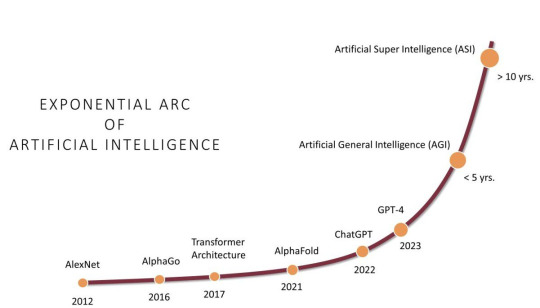
Different Types of AI
AI can be categorized into three types based on their capabilities:
Artificial Narrow Intelligence (ANI): Also known as Weak AI, ANI is designed to perform specific tasks such as facial recognition or conducting internet searches. It operates within a limited scope and cannot execute tasks beyond its predefined functions. Even OpenAI's ChatGPT and GPT-4 models fall under this category.
Artificial General Intelligence (AGI): Referred to as Strong AI, AGI can comprehend, learn, and apply knowledge across a diverse range of tasks, mirroring human intelligence. It can think, understand, and perform tasks independently. Leading AI companies in India and worldwide are currently developing AGI, with projections suggesting it will be available within the next five years.
Artificial Superintelligence (ASI): ASI is a theoretical form of AI that would surpass human intelligence in all aspects, including creativity, problem-solving, and emotional understanding. While ASI has not yet been achieved, it is anticipated to emerge in a decade or more.
History of AI Development in India
Let's embark on a brief journey through the evolution of AI in India. The seeds of AI were planted in the 1960s with foundational concepts, gradually advancing over the decades. Significant progress was made in the 2000s, propelled by government initiatives and substantial investments from technology companies.

Where Does India Stand in the AI Race?
According to the Stanford AI Index Report, the United States is the foremost consumer of artificial intelligence (AI) technology, having invested $328.5 billion (about $1,000 per person in the US) over the last five years, including $67.9 billion (about $210 per person in the US) in 2023 alone. This substantial funding underscores the U.S.'s robust commitment to advancing AI technology across diverse sectors.
China is the second-largest investor, having spent $132.7 billion on AI from 2019 to 2023. However, its investment has seen a recent decline, amounting to $15.1 billion in 2023. The United Kingdom ranks third with an investment of $25.5 billion over the same period.
India holds the fourth position globally, with a notable investment of $16.1 billion in AI over the past five years. This achievement places India ahead of Germany and emphasizes its rising significance in the global AI landscape. India's investments are largely driven by initiatives such as the forthcoming India AI program, designed to support local startups and stimulate innovation in AI.
In terms of AI innovation, the founder of OLA in India introduced a chatbot called Krutrim AI. This initiative aims to position India within the competitive realm of large language models (LLMs). Although Krutrim AI has not yet reached the sophistication of models like GPT-4 or Claude, it marks a crucial step towards fostering a vibrant AI innovation ecosystem in India. This endeavor highlights India's potential to swiftly develop advanced AI technologies.
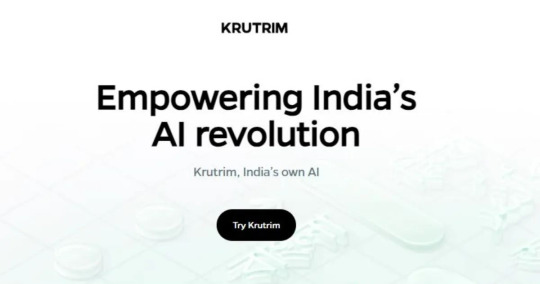
How is AI Transforming Different Industries in India?
Let's explore the remarkable impact of AI across various sectors. This information is invaluable for job seekers or aspiring entrepreneurs eager to understand the opportunities within India’s AI landscape.
1. AI in Agriculture
Market Value: Expected to reach $2.05 billion in 2024.
Future Growth: Projected to grow at an annual rate of 25.1%, reaching $7.85 billion by 2030.
Key Drivers: Increased use of IoT in farming and rising demand for higher crop yields.
AI Initiatives: The AI for Agriculture Innovation (AI4AI) initiative, launched in 2020, brought together public and private stakeholders to pilot AI technologies in Telangana, enhancing crop management and productivity (Access Partnership Report).
2. AI in Healthcare
Market Size: Valued at $10 billion in 2023.
Future Growth: Expected to grow to $35 billion by 2030, with a 30% annual growth rate.
Key Drivers: The need for improved efficiency and better decision-making.
Source: Inkwood Research.
3. AI in Manufacturing
Market Size: Projected to reach INR 12.59 billion by 2028.
Future Growth: Growing at a 20.2% annual rate from 2023 to 2028.
Key Drivers: Changing customer preferences, new distribution models, and supply chain disruptions.
Generative AI Impact: Can potentially unlock USD 621 billion of productive capacity in India, with manufacturing being a significant contributor (41%) (Access Partnership Report).
4. AI in Transportation and Logistics
Market Size: Expected to reach INR 6.71 billion by 2028.
Future Growth: Growing at 18.5% annually from 2023 to 2028.
Key Drivers: The need for improved efficiency and better decision-making.
Source: Market US.
5. AI in Finance
Market Value: Expected to reach $8 billion by 2025.
Future Growth: Growing at a CAGR of over 40% from 2020 to 2025.
Key Drivers: Advancements in data collection technology among banks and financial institutions, increased bank investments in AI, and rising consumer demand for personalized financial services.
Source: International Trade Administration.
6. AI in Telecommunication
Market Value: Part of the Asia-Pacific region.
Future Growth: Accelerated growth due to 5G infrastructure investments and a large, growing population.
Key Drivers: Enhancing customer experience, fraud and risk management.
Source: Markets and Markets.
7. AI in Energy
Market Value: Projected to grow at a CAGR of 28.8% from 2024 to 2029.
Future Growth: Strong growth in the adoption of AI technologies within the Indian renewable energy industry.
Key Drivers: Government initiatives, operational efficiency, sustainability goals.
Source: Global Market Estimates.
8. AI in E-commerce
Market Value: Expected to reach $112.93 billion in 2024 and $299.01 billion by 2029.
Future Growth: Growing at a CAGR of 21.5%.
Key Drivers: Rising internet and smartphone penetration, increasing adoption in tier 2/3 cities, and the COVID-19 pandemic accelerating the shift to online shopping.
Source: Mordor Intelligence.
In essence, AI is revolutionizing various industries in India, enhancing efficiency, reducing costs, and enabling better decision-making.
Adoption of Artificial Intelligence in India
According to a recent report by the Times of India, 9 out of 10 internet users in India, approximately 724 million people, are already integrating AI into their daily lives. This includes using AI features such as image filters, personalized recommendations, and smart devices.
Professions Most Frequently Using AI in India
Marketers and Digital Professionals
Usage: Marketers in India are leveraging AI tools like chatbots and predictive analytics for content creation, campaign optimization, and customer segmentation.
Statistics: 75.7% of digital marketers use AI tools, with 49.5% using them multiple times per week or more. Additionally, 85.1% of AI users in India utilize it for creating blog content and writing articles.
Business Professionals
Professions: Management consultants, business analysts, financial managers, accountants, and purchasing managers.
Benefits: AI assists these professionals by providing data-driven insights, optimizing processes, and enabling more informed decision-making.
Educators
Statistics: 62% of educators in India employ Generative AI (GenAI) tools in teaching and preparation, enhancing the delivery and engagement of educational content.
Usage: AI is used to generate lesson plans, provide feedback on student writing, and create personalized learning experiences.
Initiative: In September 2022, NITI Aayog, the Central Board of Secondary Education, and Intel India launched the Integrating AI and Tinkering with Pedagogy (AIoT) program in fifty schools to embed AI into subject pedagogies, improving personalized learning and educational outcomes.
Legal Professionals
Professions: Solicitors and legal professionals.
Usage: AI language models are utilized for drafting legal documents, conducting research, and providing insights on case law, making the legal services industry one of the most affected by AI.
Customer Service
Statistics: 80% of businesses in India have integrated chatbots into their customer experience strategies.
Motivation: 40% of Indian businesses cite customer experience as their primary motivator for adopting AI.
Impact: AI-powered chatbots are significantly enhancing customer service operations (Times Now report).
Industry-wise Adoption of AI
The adoption of AI in India is transforming various sectors, driven by innovative applications, supportive government initiatives, and contributions from key industry players. Here are the top industries leading the AI revolution:
AI in Healthcare
Market Growth: By 2025, spending on AI in the healthcare sector in India is expected to reach $11.78 billion.
Job Creation: AI is projected to create nearly three million jobs by 2028, significantly altering the employment landscape in healthcare.
Innovative Application: Aarya.ai, a notable startup, employs algorithms to analyze medical images, speeding up and improving the accuracy of disease diagnosis.
AI in Manufacturing
Growth Rate: AI adoption in the manufacturing sector increased by 20% from 2020 to 2023.
Primary Uses: Enhancing manufacturing operations, managing supply chain logistics, and improving IT and cybersecurity.
Success Story: FP McCain, a UK-based manufacturing company, implemented AI solutions from Softlabs Group for:
Detecting proper use of Personal Protective Equipment (PPE)
Monitoring for overloads
Ensuring Air Quality and Building Safety (AQBS)
Impact: This AI integration led to:
30% reduction in workplace accidents
25% decrease in shipment errors
20% improvement in logistics efficiency
AI's integration across these sectors exemplifies its potential to drive efficiency, enhance safety, and create new job opportunities. Explore more case studies to see AI's transformative impact.
AI in Government Initiatives
India's government is making significant strides in AI with ambitious plans. They have launched the IndiaAI mission with a budget of over Rs. 10,000 crore, aiming to:
Spark AI Innovation: Foster the development of innovative AI solutions.
Accessible Computing: Ensure that computing resources are available to everyone.
Data Quality Improvement: Enhance the quality of data for AI applications.
Homegrown AI Technologies: Develop indigenous AI technologies to reduce dependence on foreign solutions.
Additionally, the national program for AI was established in 2018, preceding the release of GPT-4, to craft a national strategy for responsible AI adoption, ensuring inclusive AI-enabled economic growth. In the 2023 budget, the government announced the creation of three Centers of Excellence in AI as part of the "Make AI for India" and "Make AI Work for India" initiatives.
These initiatives underscore the government's commitment to building a robust AI ecosystem in the country.

Several top companies are spearheading the AI revolution in India, offering solutions that address the most common business needs:
Arya-AI
Focus: AI-driven business solutions for BFSI clients.
Limitation: While they provide standardized offerings, they often lack the customization needed for other industries.
Haptik-AI
Specialty: Known for its chatbots.
Limitation: Solutions can sometimes feel generic and less tailored to specific industry needs.
Yellow-AI
Focus: AI solutions primarily for customer service, including Language Models and chatbots.
Limitation: Lacks robust solutions for hardcore industries such as Real Estate or Manufacturing.
Softlabs Group
Innovation Leader: At the forefront of AI innovation, delivering cutting-edge solutions tailored to diverse business needs.
Solutions: From developing intelligent chatbots to implementing advanced recommendation systems, Softlabs Group leverages AI for transformative results.
Reputation: Recognized as one of the top AI companies in Mumbai.
Recent Developments: Check out their recently developed research-backed AI solutions for more insights into their innovative approaches.
These companies are pivotal in driving AI adoption across various sectors in India, each contributing uniquely to the growing AI ecosystem.
What are the Barriers to AI Adoption in India?
Here’s a breakdown of the top barriers to implementing artificial intelligence in India and solutions to overcome these challenges:
1. Complex Regulations and Standards
Barrier: Standardization of AI presents a major challenge, making it difficult for companies to integrate AI solutions.
Statistic: According to an EY survey, about 63% of Indian businesses identified compliance with global data protection and privacy laws as the biggest challenge to AI adoption.
Solution: Developing clear, harmonized regulations and providing guidance on compliance can help ease integration issues.
2. Lack of Incentives for Businesses
Barrier: Implementing AI can be costly, involving expenses for data, hardware, software, and skilled employees.
Statistic: Despite high costs, 74% of large companies in India have accelerated their AI investments in the past 24 months, focusing on research and development (67%) and workforce reskilling (55%).
Solution: Offering financial incentives, subsidies, or tax breaks can encourage more businesses to adopt AI.
3. Centralization Issues
Barrier: AI governance is often centralized, with control in the hands of the government and large corporations, limiting innovation and access for smaller businesses.
Solution: Decentralizing AI governance and encouraging open-source projects can foster innovation and make AI more accessible.
4. Skills Gap
Barrier: The lack of internal technical skills is a significant hurdle.
Statistic: According to Infosys, this skills gap is the top challenge hindering businesses from utilizing emerging technologies effectively. Only 38% of households in India are digitally literate.
Solution: Initiatives like the Pradhan Mantri Gramin Digital Saksharta Abhiyan (PMGDISHA) aim to improve digital literacy in rural areas. Additionally, the Ministry of Electronics and IT (MeitY) plans to create one million skilled AI professionals by 2025 to bridge this gap.
5. Ethical and Legal Concerns
Barrier: Ethical concerns such as data privacy and bias are significant obstacles.
Statistic: According to IBM, about 26% of companies cite ethical concerns as a challenge.
Solution: Establishing robust data privacy laws and security measures, along with strict compliance, can help mitigate these concerns and build customer trust.
6. Economic Factors
Barrier: High costs deter many businesses from adopting AI.
Solution: Starting with small AI projects and scaling up gradually can help manage expenses. Partnering with AI vendors can also reduce costs.
By addressing these challenges with targeted, practical steps, India can enhance its AI capabilities and position itself as a leader in the global AI industry.
What Does India Need to Reach the Top in the AI Race?
To become a global leader in artificial intelligence, India must address key challenges and leverage its unique strengths effectively. Here are the critical steps:
1. Investment in AI Research and Development
Increase Funding: Enhance funding from both government and private sectors to boost AI research and innovation.
Encourage Collaboration: Foster partnerships between universities, industries, and the government to develop new AI technologies.
Example: The India AI program supports local startups and promotes AI innovation.
2. Robust Infrastructure
High-Performance Computing: Develop high-performance computing systems and large GPU clusters for AI projects.
Energy-Efficient Data Centers: Establish data centers that are energy-efficient for AI data storage and processing.
Example: NVIDIA’s AI Technology Centre at IIT Hyderabad supports AI research.
Update: On June 28th, 2024, Ola founder Bhavish Aggarwal announced the launch of a decentralized GPU service aimed at boosting AI computing capabilities across various sectors in India. This initiative will provide affordable access to high-performance GPUs, enabling individuals and businesses to rent them hourly for AI model training.
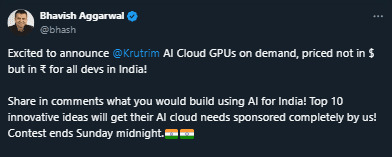

3. Ethical and Regulatory Framework
Create Ethical Rules: Establish guidelines to ensure AI is used ethically, transparently, and responsibly.
Implement Regulations: Develop regulations that protect privacy and security while fostering innovation.
Example: Japan’s balanced approach to AI innovation and risk management.
4. Public-Private Partnerships
Encourage Collaborations: Foster partnerships between the government, private companies, and startups to support AI projects.
Example: Collaborations between Indian companies like Reliance and Tata with global leaders like NVIDIA and Google.
5. Data Accessibility and Quality
Promote Data Sharing: Encourage the sharing of high-quality and diverse datasets for better AI model training.
Ensure Data Protection: Maintain strong data protection measures to ensure user trust and comply with privacy laws.
Example: The IndiaAI Datasets Platform aims to streamline access to high-quality non-personal datasets for AI innovation.
6. Innovation Hubs and Startups
Support Startups: Provide funding, mentorship, and infrastructure support to AI startups.
Establish Innovation Hubs: Create AI innovation hubs and centers of excellence to nurture new ideas and research.
Example: IndiaAI Startup Financing accelerates deep-tech AI startups by streamlining access to funding for innovative AI projects.
7. Retaining Talent in India
Utilize Diverse Population: Leverage India's diverse population to collect varied data for robust AI models.
Encourage Specialization: Promote AI specialization through initiatives like AI For All by Intel.
Create Job Opportunities: Develop AI-related job opportunities to prevent brain drain and retain skilled talent.
Example: IndiaAI Future Skills focuses on expanding AI education at all academic levels and establishing Data and AI Labs in Tier 2 and 3 cities.
By addressing these needs, India can become a global leader in AI, driving economic growth, job creation, and technological progress.
What Global Leaders Say About the Future of AI in India?
Let's explore insights from prominent personalities in both the private and government sectors about the future of AI in India:
1. Dr. Jeff Dean, Chief Scientist, Google DeepMind and Google Research
Quote: "Young students in India are eager to understand the shift from more traditional computer science to learned-based approaches for solving all kinds of problems. You’re going to see more students wanting to enter this kind of study and field of endeavor."
Source: Google Blog
2. Sundar Pichai, CEO of Alphabet
Quote: "India’s entrepreneurial spirit and technological capabilities make it a significant player in AI. Looking forward to seeing India’s role in shaping the future of AI. #GlobalTech #AIRevolution"
Source: Interview with Varun Mayya
3. Satya Nadella, CEO of Microsoft
Quote: "AI will not only solve challenges for India but also for the world."
Source: ET Times interview
4. Bhavish Aggarwal, Founder at OLA
Quote: "Govt must accelerate transition to green energy. This will reduce the cost of energy and import burden. India should be the AI & computer hub of the world by leveraging its data, population, and talent… Must integrate into future global supply chains."
Source: Interview Source
Quotes and kind words from such influential figures highlight the horizon of opportunities and make us hopeful for a better future driven by AI in India.
Future of AI: What Will It Look Like?
Artificial Intelligence is set to revolutionize numerous sectors in India, bringing significant changes to societal functions and industry dynamics. Here’s a glimpse into what the future might hold across various domains:
1. AI in the Indian Military
Future Vision: AI could autonomously manage surveillance along borders using drones that detect and track hostile movements without risking human lives. These AI-driven systems could also enhance cyber defense by adapting to new threats in real time, ensuring robust national security.

2. AI’s Impact on the Workforce
Example: Priya, an office worker, uses AI to assist with her daily tasks, such as organizing her calendar and sorting data. This allows her more time to brainstorm new ideas and focus on the parts of her job she enjoys.

3. AI in the Entertainment Industry
Example: Aarav, a filmmaker, leverages AI to transform his written stories into movies. AI helps him select actors, decide on scenes, and even edit the film, streamlining the entire production process.

4. AI in Personal Transportation
Example: Rahul drives a smart car in Delhi that operates autonomously. This car uses AI to find the best routes by continuously checking traffic and weather updates, ensuring a smooth and efficient journey.
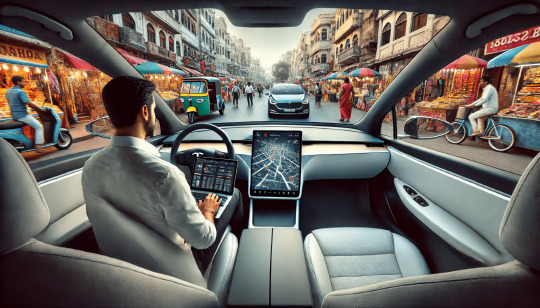
5. AI in Commerce and Delivery Services
Future Vision: Imagine a shopping website that uses AI to predict fast-selling items, employs robots to pack goods in the warehouse, and utilizes drones for rapid delivery. This could dramatically improve the efficiency and speed of commerce and delivery services.
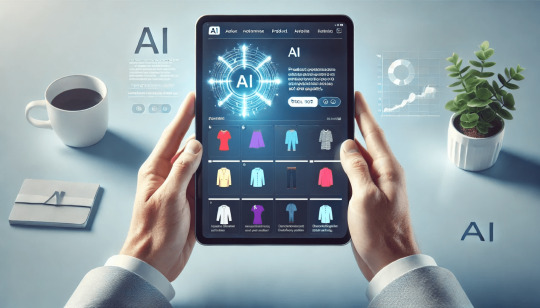
These examples illustrate the transformative potential of AI across various domains, promising a future where AI significantly enhances efficiency, creativity, and convenience in our daily lives.
Wrapping Up!
India stands at a pivotal moment in its quest to become a global leader in artificial intelligence (AI). With a rich talent pool, a burgeoning tech industry, and robust government support, the country is well-positioned to achieve remarkable milestones in the AI landscape. However, key questions remain: What specific goals should India pursue in the AI arena? Should India focus on being the foremost consumer of AI, excel in industry-specific applications, or aim for groundbreaking advancements like Artificial General Intelligence (AGI)?
Strategic Goals for India's AI Future:
Becoming the Best Consumer of AI:
Focus: Utilize AI to enhance various sectors such as healthcare, agriculture, finance, and transportation.
Impact: Improve efficiency, drive innovation, and solve complex societal problems through widespread AI adoption.
Excelling in Industry-Specific Applications:
Focus: Develop tailored AI solutions for specific industries like manufacturing, education, and entertainment.
Impact: Achieve significant advancements and maintain a competitive edge in global markets by addressing unique industry needs.
Pioneering Groundbreaking Advancements like AGI:
Focus: Invest in research and development to create advanced AI technologies, including Artificial General Intelligence (AGI).
Impact: Position India as a leader in cutting-edge AI research, attracting global talent and investment.
By setting clear strategic goals and leveraging its strengths, India can navigate the AI landscape effectively and establish itself as a powerhouse in the global AI ecosystem. Whether focusing on being a top consumer of AI, excelling in industry-specific applications, or pioneering groundbreaking advancements, the future of AI in India looks promising and full of potential.
0 notes
Text

Expert Talk Ep. 137 with Jaideep Parashar on How to Earn From Twitter? Curious about turning your tweets into cash? Think Twitter is just for tweets? Think again! Twitter as a business tool? Absolutely! In today's social media-driven world, platforms like Twitter are proving to be valuable tools for generating income. Whether you're a beginner or already have a presence on Twitter, this session will offer actionable insights for monetization
Date & Time: Friday, 27th September, 8 PM IST Speaker: Jaideep Parashar, who has a unique ability to blend AI with practical solutions, and his recent efforts have been centered on making AI accessible and practical for India. LinkedIn Link - https://www.linkedin.com/events/7243972105510244352 YouTube Link - https://youtube.com/live/1aFJNrea-GE Don’t miss out on this session, whether you're looking to earn extra income or build a long-term business on Twitter, this talk will be packed with value. Stay till the end to discover an exciting surprise we have in store for the participants! #ExpertTalk #VipulTheWonderful #TwitterMonetization #SocialMediaIncome #AIInIndia
#postaresume#vipulthewonderful#vipulmmali#helpinghand#hiringnow#hiring#experttalk#linkedinlive#career#business#dreams#twice#twitter#twisted wonderland#twitch#hot twink#tweet#elon musk#fuck elon musk#twitter x#bluesky#sanders sides#side order#side income#desi side of tumblr#one sided love#affiliatemarketing#twitch affiliate#affiliate program#affiliate links
0 notes